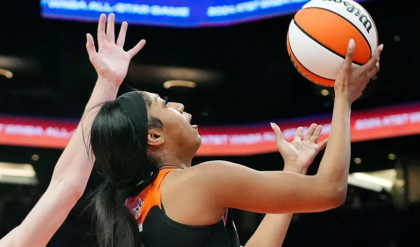ESPN’s Paywall Dilemma: Caitlin Clark and the WNBA’s Viewership Struggles
The rise of Caitlin Clark as a standout player in the WNBA has been met with significant enthusiasm from basketball fans. However, ESPN’s recent decision to place her games behind a paywall has raised concerns about the network’s ability to capitalize on her popularity and the broader challenges facing WNBA viewership.
Caitlin Clark, known for her dynamic and prolific scoring, has garnered a substantial following due to her exceptional performances. Her presence on the court is a major draw for fans, both on television and in arenas. Yet, her games have seen varied viewership depending on the platform. When available on more accessible platforms like WNBA TV, her games achieve commendable viewership numbers, with one broadcast on NBA TV drawing upwards of 330,000 viewers. This demonstrates a clear interest in watching her play. However, moving these games behind ESPN’s paywall on services such as ESPN+ or Le Pass has significantly reduced viewership, with one game on ESPN attracting only 420,000 viewers—a stark contrast to more freely available broadcasts.
ESPN’s decision to restrict access to Clark’s games by placing them on ESPN 3, a platform requiring a subscription, has sparked criticism. Fans and analysts argue that this move limits the potential audience and hinders the league’s growth. The paywall not only deters casual viewers who may not subscribe but also prevents a broader fanbase from forming around exciting new talent like Clark.
The challenges ESPN faces are highlighted by a striking comparison: WNBA games, including those featuring Clark, often have lower viewership than popular entertainment shows on the same network. For example, “Beat Bobby Flay,” a cooking competition show, has outperformed live WNBA games in terms of ratings. This comparison underscores the difficulty sports networks face in attracting and retaining viewers for women’s sports, even with star players. ESPN’s morning talk show “First Take” also draws more viewers than WNBA games, leading to discussions about the network’s strategy and its impact on the visibility of women’s basketball. Critics suggest that the low numbers for WNBA games on ESPN are a source of embarrassment and reflect poorly on the league’s perceived popularity.
The decision to hide games behind a paywall seems counterintuitive, especially given Caitlin Clark’s drawing power. The inconsistency in viewership numbers between freely available broadcasts and those behind a paywall indicates a missed opportunity for ESPN to boost the league’s profile. By making these games less accessible, ESPN may be stifling the organic growth of the WNBA’s fanbase, which is essential for long-term success.
This situation highlights broader challenges within the league, raising questions about how women’s sports are promoted and the strategic decisions made by broadcasters. There is a growing call for networks to rethink their approach, making games more accessible to build a larger and more dedicated audience. As the WNBA continues to grow, it will be crucial for broadcasters like ESPN to find ways to capitalize on the popularity of its stars and ensure that exciting talents like Caitlin Clark are visible to as many fans as possible.





